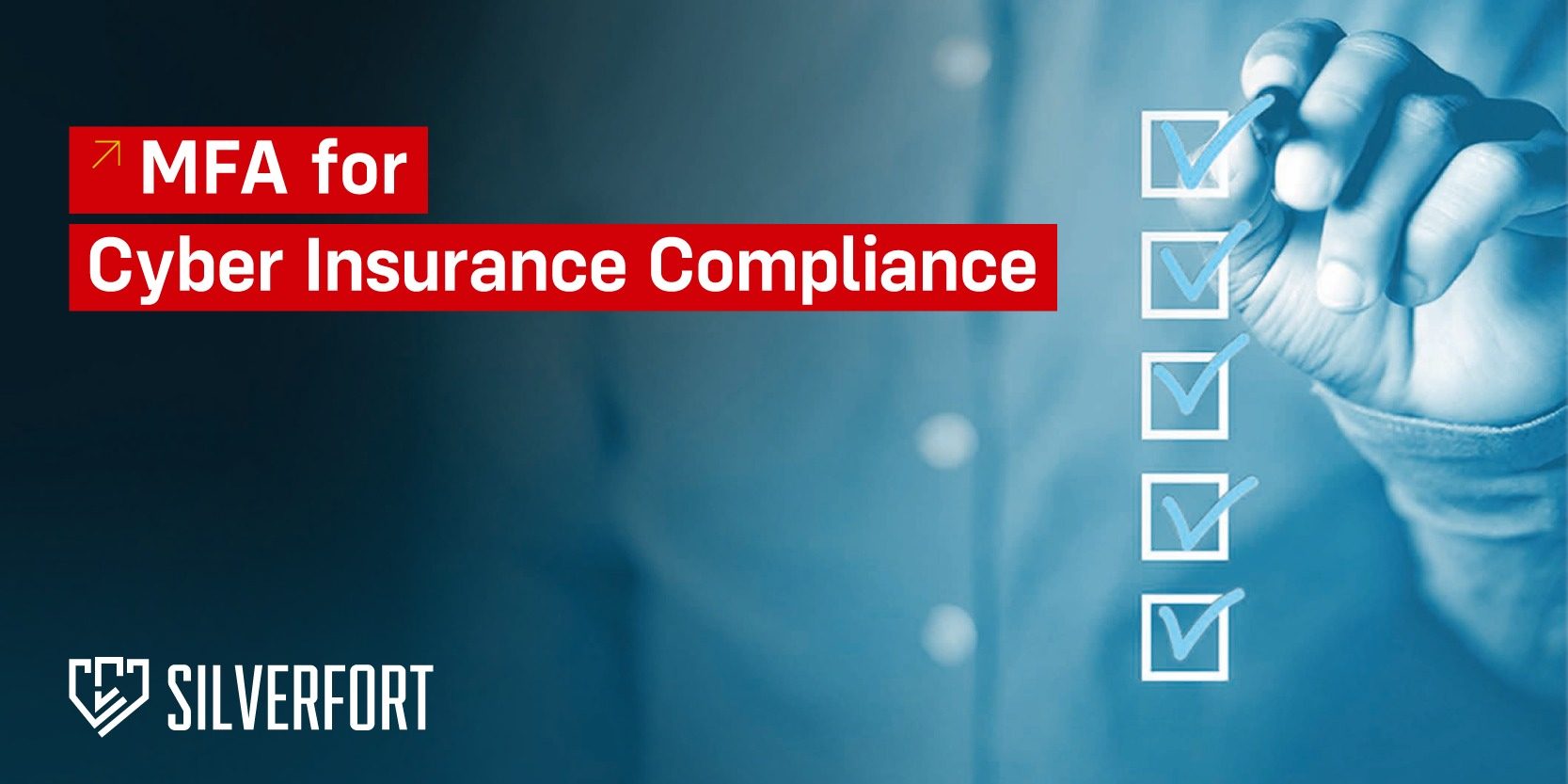
Cyber insurance requirements for the protection of sensitive systems are becoming increasingly stringent. With Silverfort, these requirements can be easily met by extending multi-factor authentication (MFA) to all on-premises and cloud-based systems. This includes systems that previously could not be protected using MFA.
Ransomware attacks and other cyberattacks are on the rise worldwide and can cause devastating damage. Everyone is vulnerable, from small businesses to governments. Cyber insurance has become an important component of cybersecurity strategies in order to cushion the financial losses of a successful attack. Due to the rising level of threat from cyber attacks, insurance companies have increased the requirements placed on customers seeking to take out or renew a cyber policy.
Cyber insurance – the most important new requirements
The new requirements regarding cyber insurance may include the continuous monitoring of endpoints using EDR solutions and the implementation of MFA. The first requirement is easy to meet, but the MFA requirements are much more complex. This requires expanding MFA to include resources and access interfaces that, due to their design, are outside the scope of application of conventional MFA solutions. The new requirements for MFA protection are a major challenge for small and medium-sized companies in particular.
Identity security and compliance for cyber insurance from a single source
The Silverfort Unified Identity Protection platform features unique technology and architecture that makes it possible to cover all the emerging needs of cyber insurance in a single, easy-to-implement solution. Silverfort is the only solution that implements MFA through the backend of identity providers, rather than adding agents or proxies to individual endpoint resources. In practice, this means that Silverfort can be deployed in a company’s production environment and that user accounts and resources can be immediately protected with MFA. All MFA safeguards are consolidated into a single solution. Silverfort is therefore the perfect solution to help companies deal with the compliance requirements for cyber insurance.
Benefits of Silverfort’s MFA solution for cyber insurance compliance
Silverfort’s all-in-one solution provides flexible identity protection that can be adapted to all insurers. The key benefits are:
Why multi-factor authentication is essential
Taking out cyber insurance and finding the right solution for providers’ increasingly stringent requirements is not easy. Protecting all company resources with MFA and having users accept the extensive changes is a major challenge for most companies. However, if the company wants to improve its protection against cyber attacks, these changes are unavoidable. Implementing multi-factor authentication for all resources in the company is an important step towards improving security. Thanks to Silverfort, you can get quick, uncomplicated protection, ensuring that you can take out cyber insurance to cover emergencies.
Interested? If you have any questions, please contact:
Marc Robischung
Senior Security Business Development Manager
E-Mail: marc.robischung@datastore.ch
